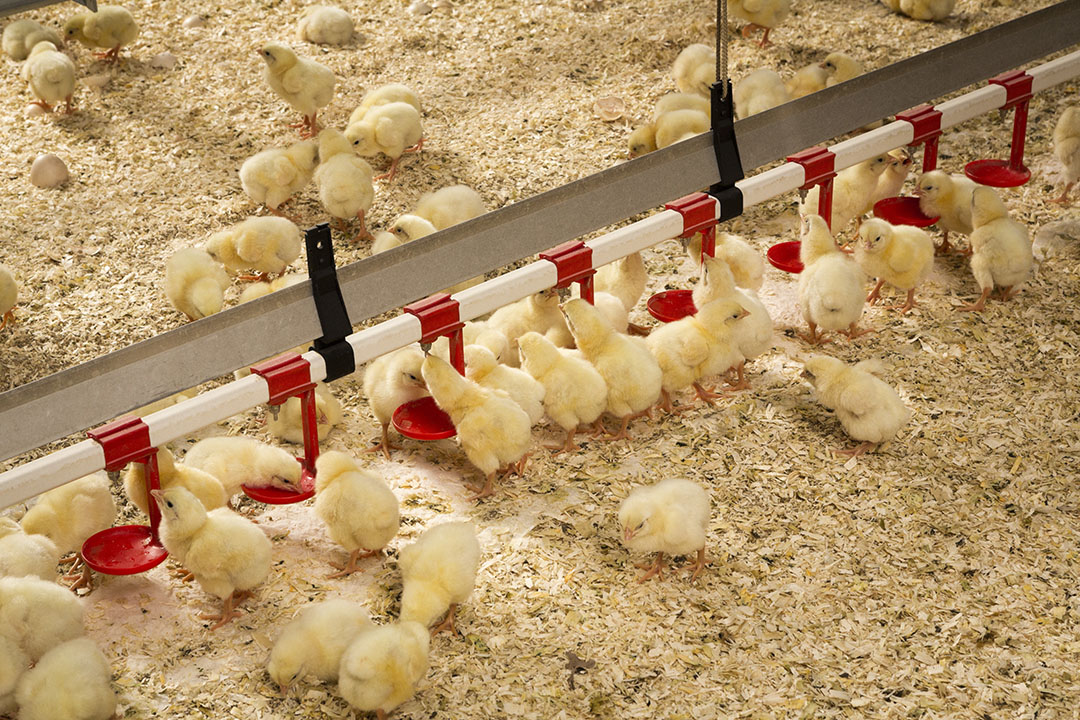ABF programs: Pay attention to the whole system

A new paper describes a holistic view of intestinal health in poultry. Nutrition is an important part in this, but not the only measure.
Edgar O.Oviedo-Rondón from North Carolina State University in the US published a new paper in Animal Feed Science and Technology in which he reviews the multiple factors that can affect the intestinal health of poultry. The objective of this paper is to offer a great overview of intestinal health in poultry production and emphasise that a holistic approach is necessary when trying to minimise these dysbiosis and enteric diseases.
Antibiotic free spurs focus on intestinal health
Intestinal health is necessary to maintain efficient and sustainable gastrointestinal tract (GIT) physiology. Over the past 2 decades, this topic has gained even more interest in poultry production due to increasing demands for economic efficiency, animal welfare, food safety, reduction in environmental impacts, and a ban on or avoidance of growth promoting antibiotic use. And the latter is an important one. Future antibiotic free production (ABF) and its sustainability depend on developing a larger understanding and practical application of concepts related to intestinal health that imply complete holistic management of the production system.
Not bacteria, but excess of nutrients is the problem
The author addresses that a common mistake when intestinal health is discussed is to only focus on the control of intestinal disease, caused by Clostridium. E. coli or Salmonella. However, these are, in reality, the consequences, not the causes of the problem. Generally, the true problem is an excess of nutrients in the hindgut which causes the proliferation of these microbes in the hindgut with the consequence disruption of gut microbiome-host equilibrium, causing the metabolic, pathogenic or sterile inflammation. The excess of nutrients in the hindgut may be due to either high nutrient levels in the diet or suboptimal digestion. Bacteria, fungi, protozoa and even virus proliferate when there are more undigested nutrients in the hindgut available for their use.
Use feed that stimulates gizzard function
One of the key aspects to improving intestinal health and ABF production is to guarantee that appropriate foregut digestion occurs most of the time. Manipulation of feed granulometry, supply of water with good quality, quality control of dietary fat type and levels and addition of exogenous enzymes can aid to maintain good digestion. Granulometry or particle size of all feed ingredients can stimulate gizzard function. This granulometry is generated in the grinding process or by including small proportions of whole grains, partially broken grains in the mixer or fibre and reduced during the pelleting process. It is well demonstrated that coarse particles modulate the expression of genes encoding important digestive enzymes and nutrient transporters. Another solution is to use exogenous enzymes. Enzymes reduce microbial proliferation by reducing the undigestable components of feed, phytate, the viscosity of digesta or the irritation to the gut mucosa that causes inflammation. Enzymes also generate metabolites that promote microbial diversity which helps to maintain gut ecosystems that are more stable and more likely to inhibit pathogen proliferation.
Good quality feedstuffs and water quality
The paper addresses that optimum digestibility can only be obtained when diets are made with good quality feedstuffs. To avoid intestinal health problems, poultry companies, especially those with ABF production programs, need to place more emphasis on avoiding levels of mycotoxins in feedstuffs and rancid fats that exceed recommended limits. Mycotoxins are able to compromise several key functions of GIT resulting in decreased nutrient absorption by decreasing available surface area, modulation of nutrient transporters, and loss of barrier function. Rancid fats and oils should be rejected since they have been related to pathogenesis of enteric diseases. Good water quality is also important for proper digestion so its physicochemical characteristics should be measured, controlled and improved at the farm level. The pH should be maintained slightly acidic, between 5.5 and 7, because basic water reduces the activity of most digestive enzymes.
Feed additives to modulate gut microflora
Some feed additives (probiotics, prebiotics, enzymes, organic acids, and herb extracts) and minerals can help maintain healthy microbial communites (MC) in all regions of the gut even under circumstances that normally threaten intestinal health like feed withdrawal, intestinal infections with coccidia, and heat stress. Their use in such situations can even maintain similar normal diversity of MC observed in control groups of chickens. Therefore, these products are an additional tool for effective ABF production avoiding gut health issues.
Not only focus on feed, but take holistic approach
The author also describes non-feed measures as a way to promote intestinal health in poultry. To make ABF programs successful, more attention needs to be given to the whole production system, not only to feed, feed additives or control of a couple enteric pathogens. Housing, management, water quality and biosecurity at both the breeder and grow out levels are critical in ABF production. Even hatchery conditions should be improved to make ABF programs successful and maintain good intestinal health.












